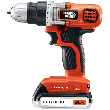How Do You Stop Water Hammering?
Written by Lee Wyatt (last updated December 31, 2021)
You would be absolutely amazed at how common of problem water hammering is. In fact, it is so common that it would honestly be safe to say that every homeowner will run into it at least once in their life. But how do you stop water hammering if you do run into it? It's not particularly difficult to fix this problem when you do run into it, but it will require at least one other person to help you out. That, and be sure to follow these simple directions.
- Locate the source. Have a friend of your turn the water on and off, and follow the sound of the hammering until you locate it. The most common location to find these kinds of problems are in the pipes that are under your house, in the basement or crawlspace.
- Check the pipe. When you located the general area of the source of the hammering, you need to check the pipes themselves. Check to see if the pipes are loose. If they are loose, then tighten them down as much as possible. The best way to do this is by using some plumber's tape, and creating a cushion between the walls and the pipes. Test to see if the hammering has gone away.
- Drain the air if necessary. If the hammering hasn't gone away, then you will need to actually check and drain the air chambers in the pipe system. These chambers are typically short pieces of vertical pipes that have a bit of air trapped in them. These air traps are usually located behind appliances, and fixtures in the home, and are designed so that the air that is within them to cushion the water and prevent it from hammering when the water is suddenly turned off. Usually, all you will need to do is shut off the water, and then drain the water from the system starting at the lowest point in the house (usually one of the outside water fixtures). Turn the water back on, and then double check your work.
- Check the water pressure. Another common cause for water hammering is if your water pressure is too high. For most homes, the water pressure should be set at around 80 psi, and if it is above that then you probably have a faulty regulator. These regulators should always be replaced by a licensed and trained plumber to ensure that there are no problems,
- Replace faulty air chambers. In the event that the water pressure turns out to be alright you really only have one option left, and that is to replace potentially faulty air chambers. This usually means that you will have to open up the wall, so leave this as a last resort. But if you do, you will once again need to check with a licensed plumber to get the work done, and then hire an additional contractor to repair the holes in your walls.
Author Bio
Lee Wyatt
Contributor of numerous Tips.Net articles, Lee Wyatt is quickly becoming a regular "Jack of all trades." He is currently an independent contractor specializing in writing and editing. Contact him today for all of your writing and editing needs! Click here to contact. Learn more about Lee...
Cleaning Your Garage Floor
If you are planning on selling your home, or simply wanting to spruce up the place you might want to think about hitting ...
Discover More
Adding Wainscoting
Have you ever seen a wall that has a beautiful wood finish along the bottom half? If you have, then you have seen ...
Discover More
Designing an Outdoor Room
Designing an outdoor room is a remarkably easy task, and can actually be done by anyone. In order to get professional ...
Discover More
More Home Improvement Tips
Locating the Water Shutoff Valve in Your Home
Whether you plan on doing some home plumbing repairs or not, there is one thing that every homeowner should know about ...
Discover More
Insulating Pipes
A fairly common problem that many homeowners face during the cold winter months is their pipes freezing and bursting. One ...
Discover More
Maintaining Your Septic Tank
Septic tanks are a fairly common piece of household equipment that need regular and steady maintenance. If they aren't ...
Discover More

Comments